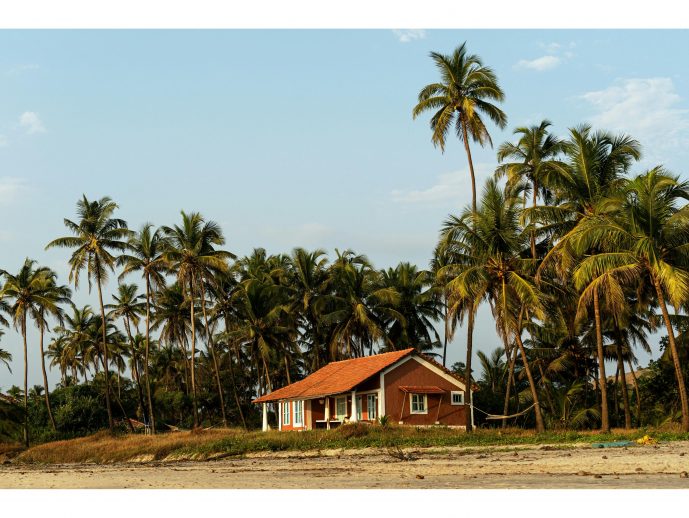Categories more
- Adventures (17)
- Arts / Collectables (15)
- Automotive (37)
- Aviation (11)
- Bath, Body, & Health (77)
- Children (6)
- Cigars / Spirits (32)
- Cuisine (16)
- Design/Architecture (23)
- Electronics (13)
- Entertainment (4)
- Event Planning (5)
- Fashion (45)
- Finance (9)
- Gifts / Misc (6)
- Home Decor (44)
- Jewelry (41)
- Pets (3)
- Philanthropy (1)
- Real Estate (15)
- Services (23)
- Sports / Golf (14)
- Vacation / Travel (60)
- Watches / Pens (14)
- Wines / Vines (24)
- Yachting / Boating (17)
Salt-Air Corrosion in Coastal Zones: Cost Considerations
Published
10/14/2025Living by the ocean is priceless… until the salt gets into your gutters. For anyone near the coast, salty sea air is not just a breeze; it's a constant source of corrosion. Salt particles carried by wind land on gutters and other metal surfaces. Add humidity, and corrosion starts much faster than it would inland.
For homeowners, this means gutters often need to be replaced or repaired earlier, sometimes every 10-15 years instead of 20-30 years, for inland homes. Understanding how salt air affects gutters is the first step toward realistic budgeting.
How Salt Air Accelerates Gutter Damage
Salt by itself isn’t destructive until it combines with moisture from rain, fog, or ocean spray. When that mixture sits on metal surfaces:
- Aluminum starts to pit and oxidize, losing its protective layer.
- Steel rusts quickly without high-grade galvanization.
- Even copper, typically a durable material, develops an aggressive green patina and can thin out over time in harsh ocean climates.
Wind-driven rain carries salt particles onto gutters and fascia boards. With each wet-dry cycle, salt concentrates on the surface, speeding up corrosion. The closer the home is to open water, the more frequent and intense this cycle becomes.
Material Choices That Influence Costs
Choosing the right gutter material in a coastal area can result in thousandsof dollars in savings over the life of the home.
Here’s how the main options compare:
- Marine-grade aluminum: Slightly more expensive than standard aluminum, but resists pitting and lasts longer.
- Galvanized or stainless steel: Higher upfront cost; resists rust better, though regular maintenance is still needed.
- Copper: A premium option with natural anti-corrosion properties, but in strong salt air, it still requires inspections and, sometimes, protective coatings.
- Vinyl or PVC: Immune to rust and relatively affordable, but can become brittle in direct sun and high winds.
The initial bill for these materials may be higher than for homes in inland areas. However, better resistance to corrosion often means lower replacement and maintenance costs over the long run.
Installation and Maintenance Factors
Salt-exposed gutters require not just durable materials but also proper installation and consistent care. The primary cost factors include regular cleaning to remove salt buildup, periodic renewal of protective coatings, routine inspections after storms, and timely replacement of corroded fasteners and hangers. Neglecting these measures shortens gutter life and often leads to expensive water damage to fascia, siding, and foundations.
Budgeting Smart: Use a Gutter Installation Cost Calculator
Estimating gutter costs in coastal areas is challenging because salt-air corrosion shortens gutters' lifespan, increasing long-term expenses, while labor and materials often cost more near the shore.
A gutter installation cost calculator https://www.myhomequote.com/gutter-installation/cost-calculator provides a location-specific baseline, allowing you to factor in protective coatings, corrosion-resistant fasteners, and more frequent maintenance cycles. This precise approach prevents under-budgeting, reveals true lifecycle costs, and facilitates easier comparison of contractor quotes in volatile coastal markets.
Final Takeaway
Living near the coast comes with undeniable rewards but also higher maintenance costs. Gutters are on the frontline against salt-air corrosion, so it pays to invest in the right materials and regular care.
By combining a smart material choice with proper installation and utilizing tools like a gutter installation cost calculator to plan ahead, homeowners can control long-term expenses and protect their property from the hidden yet persistent damage caused by salty sea air.















